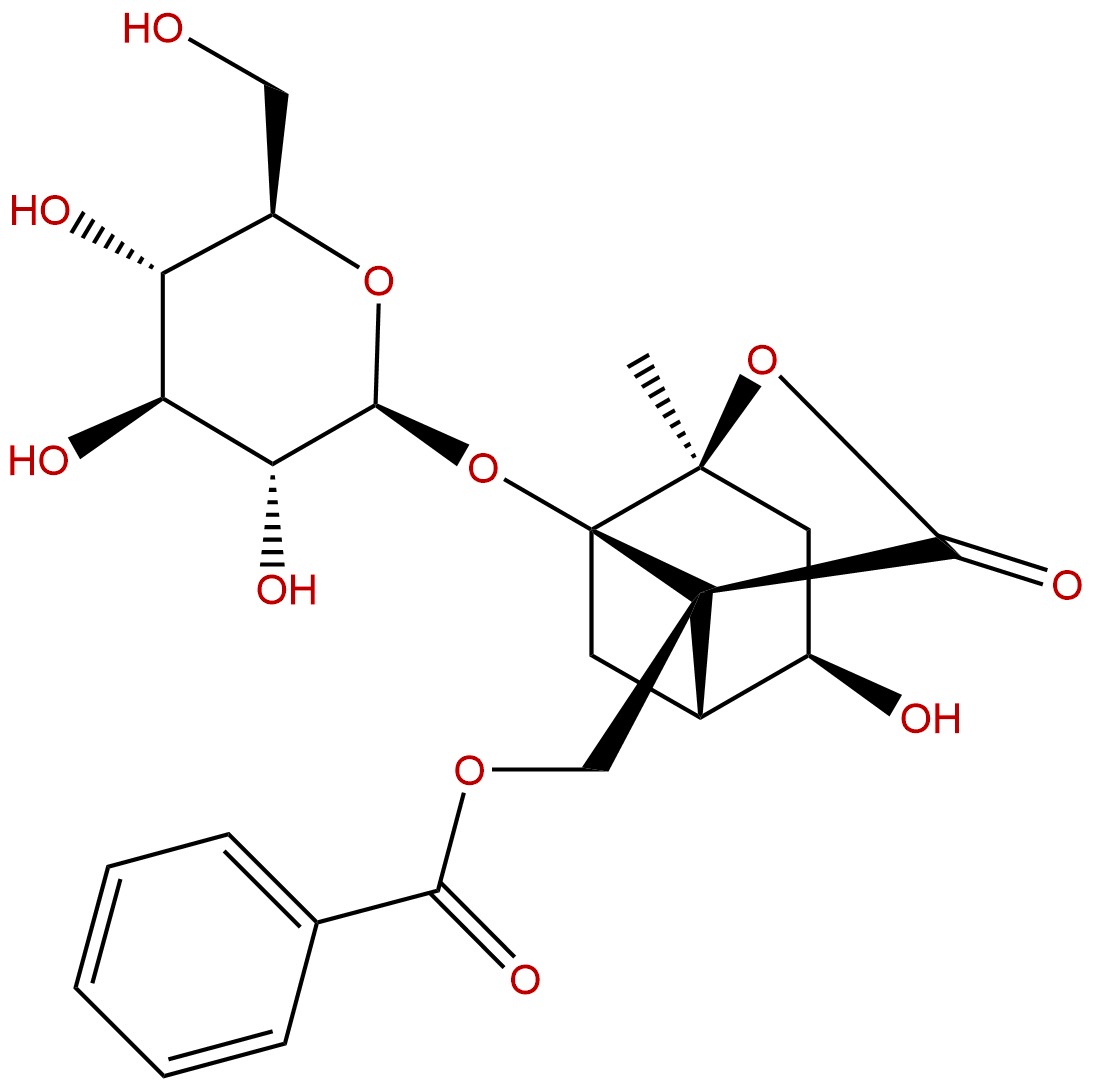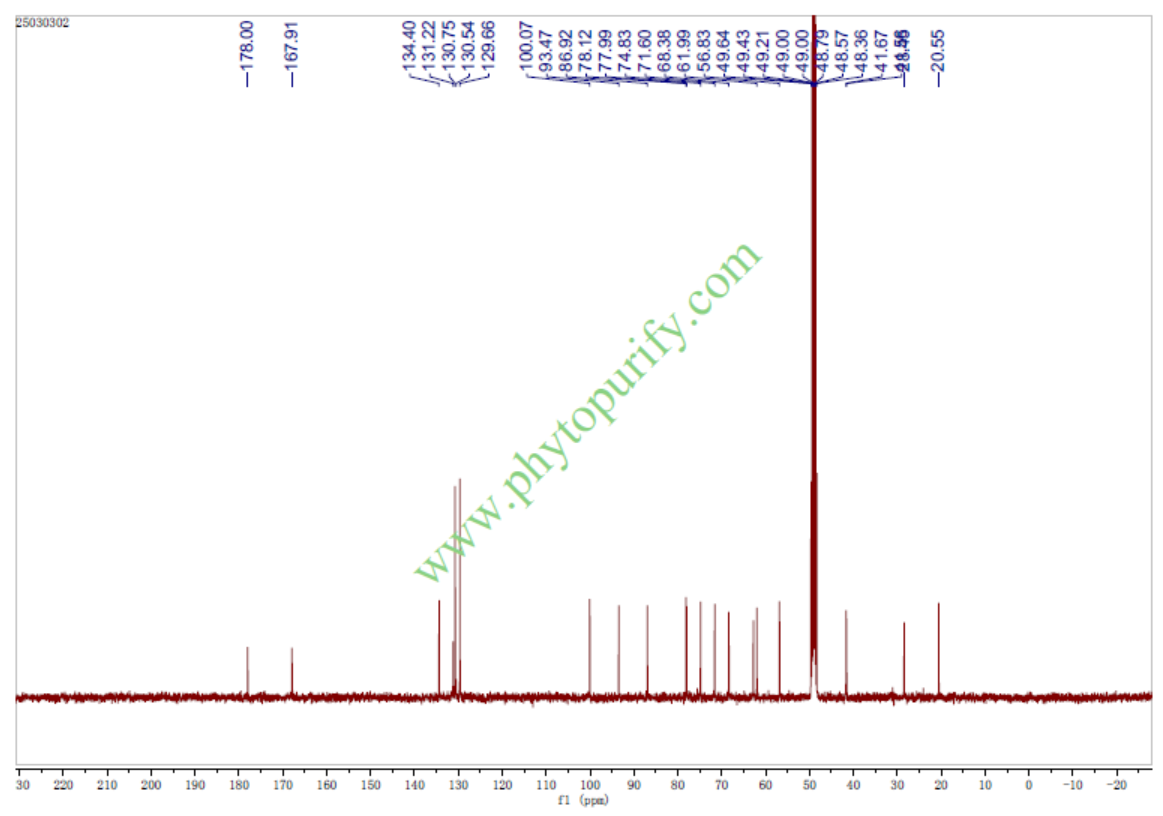
AlbiflorinCAS No.:39011-90-0
|
||||||||||
 |
|
|
||||||||

| Catalogue No.: | BP0134 |
| Formula: | C23H28O11 |
| Mol Weight: | 480.466 |
Product name: Albiflorin
Synonym name:
Catalogue No.: BP0134
Cas No.: 39011-90-0
Formula: C23H28O11
Mol Weight: 480.466
Botanical Source: Paeonia lactiflora Pall.
Physical Description:
Type of Compound: Monoterpenoids
Purity: 95%~99%
Analysis Method: HPLC-DAD or/and HPLC-ELSD
Identification Method: Mass, NMR
Packing: Brown vial or HDPE plastic bottle
Storage: Store in a well closed container, protected from air and light. Put into refrigerate or freeze for long term storage.
Whenever possible, you should prepare and use solutions on the same day. However, if you need to make up stock solutions in advance, we recommend that you store the solution as aliquots in tightly sealed vials at -20℃. Generally, these will be useable for up to two weeks.
The product could be supplied from milligrams to grams
Inquire for bulk scale.
Description:
Albiflorin has anti-inflammatory, and antidepressant-like effects. Albiflorin may reduce or prevent osteoblast degeneration in osteoporosis, and may promote the recovery of bone marrow hemopoietic function in a myelosuppressed mouse model, it has neuroprotective effect on primary hippocampal cells against β-amyloid induced toxicity.
References:
Fitoterapia. 2013 Sep;89:33-41.
Protective effect of albiflorin against oxidative-stress-mediated toxicity in osteoblast-like MC3T3-E1 cells.
Albiflorin isolated from Paeoniae Radix was investigated for its ability to protect against antimycin A-induced osteoblast toxicity in the MC3T3-E1 cell line.
METHODS AND RESULTS:
MC3T3-E1 cells showed significantly reduced viability, increased apoptosis and lactate dehydrogenase release, elevated ROS/RNS levels, and decreased mitochondrial function after exposure to antimycin A. Pretreatment with Albiflorin reversed the loss of cell viability in antimycin A-treated cultures. Similarly, pretreatment with Albiflorin before antimycin A resulted in decreased apoptosis and lactate dehydrogenase release, decreased ROS/RNS levels, and increased mitochondrial function compared to antimycin A-treated cultures. In addition, Albiflorin increased the mineralization reduced by antimycin A. Albiflorin reduced antimycin A-induced mitochondrial cytochrome c loss and cardiolipin peroxidation, conferring protection against ROS. These results confirmed the crucial role of cytochrome c and cardiolipin in the underlying mechanistic action of Albiflorin. Therefore, the results suggest that Albiflorin enhances mitochondrial function to suppress antimycin A-induced oxidative damage via the preservation of cytochrome c and cardiolipin.
CONCLUSIONS:
All of these data indicate that Albiflorin may reduce or prevent osteoblast degeneration in osteoporosis.
Evid-based. Compl. Alt. , 2016, 2016(15):1-8.
Paeoniflorin and Albiflorin Attenuate Neuropathic Pain via MAPK Pathway in Chronic Constriction Injury Rats
Neuropathic pain remains as the most frequent cause of suffering and disability around the world. The isomers paeoniflorin (PF) and Albiflorin (AF) are major constituents extracted from the roots of Paeonia (P.) lactiflora Pall. Neuroprotective effect of PF has been demonstrated in animal models of neuropathologies. However, only a few studies are related to the biological activities of AF and no report has been published on analgesic properties of AF about neuropathic pain to date.
METHODS AND RESULTS:
The aim of this study was to compare the effects of AF and PF against CCI-induced neuropathic pain in rat and explore the underlying mechanism. We had found that both PF and AF could inhibit the activation of p38 mitogen-activated protein kinase (p38 MAPK) pathway in spinal microglia and subsequent upregulated proinflammatory cytokines (interleukin-1β (IL-1β) and tumor necrosis factor-α (TNF-α)). AF further displayed remarkable effects on inhibiting the activation of astrocytes, suppressing the overelevated expression of phosphorylation of c-Jun N-terminal kinases (p-JNK) in astrocytes, and decreasing the content of chemokine CXCL1 in the spinal cord.
CONCLUSIONS:
These results suggest that both PF and AF are potential therapeutic agents for neuropathic pain, which merit further investigation.
HPLC of Albiflorin

NMR of Albiflorin
